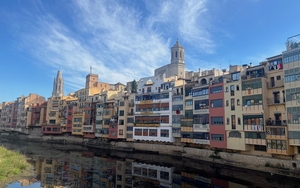MARKING the thirtieth anniversary of the Falklands War, a new photographic display in the grounds of Imperial War Museum North (IWMN) in Manchester will take a look at the heroes, casualties, dangers and challenges of the conflict.
Ward, who commanded 801 Squadron, personally shot down three enemy aircraft in combat and was awarded the Distinguished Service Cross
The free, outdoor display contains powerful photographs depicting the war on land, in the air and at sea - all taken from the extensive IWM photographic archive.
The six images on display are being blown up large. Five metres high they will be displayed against backdrop of IWMN.
Amongst the images are dramatic scenes such as that of a British casualty being rushed to the sick bay on board HMS Hermes and Royal Marines yomping across the Falklands towards Port Stanley.
Meanwhile, an intimate photograph of a downcast Argentinian prisoner of war by photographer Paul Haley provides an insight into the experiences of troops on both sides during the conflict.
Fleet Air Arm pilot Lieutenant Commander Nigel 'Sharkey' Ward, is pictured moments after shooting down an Argentinian aircraft. Ward, who commanded 801 Squadron, personally shot down three enemy aircraft in combat and was awarded the Distinguished Service Cross for his actions.
Dispelling the myth that very few photographs were taken during the Falklands War, the new display reveals that, despite access restrictions and logistical difficulties, photographers were present and captured truly striking images of the conflict.
Inside IWM North's Main Exhibition Space, visitors can explore artefacts from the conflict, including a Kawasaki motorbike - taken from a Falkland Islander by Argentinian troops and subsequently captured by a member of the British Armed Forces.
Also on display are Argentinian matchboxes bearing an image of the cruiser General Belgrano, which was sunk by Royal Navy submarine HMS Conqueror on 2 May 1982.
Copies of drawings by IWM's official war artist from the conflict, Linda Kitson, are also on display in the Main Exhibition Space. Kitson produced over 400 drawings, often completed at speed in hostile conditions and at night.
The Falklands, 1982 at IWMN marks the 30th anniversary of The Falklands War. On 2 April 1982 Argentinian forces overwhelmed the Royal Marine garrison in Stanley, the capital of the Falkland Islands. This was the first invasion and occupation of British territory since the Second World War. Argentina had claimed sovereignty over the Falkland Islands - which they called the 'Malvinas' - for more than 150 years.
The Falklands had a population of around 1,800 - many living in remote sheep farms and settlements. The Falkland Islanders had made it clear before 1982 that they wished to remain British and not part of Argentina. Britain responded to the invasion by sending a Task Force 8,000 miles to the South Atlantic. A seven week naval, air and land campaign resulted in Britain recapturing the islands.
252 British servicemen, 655 Argentinian servicemen and 3 islanders died.














